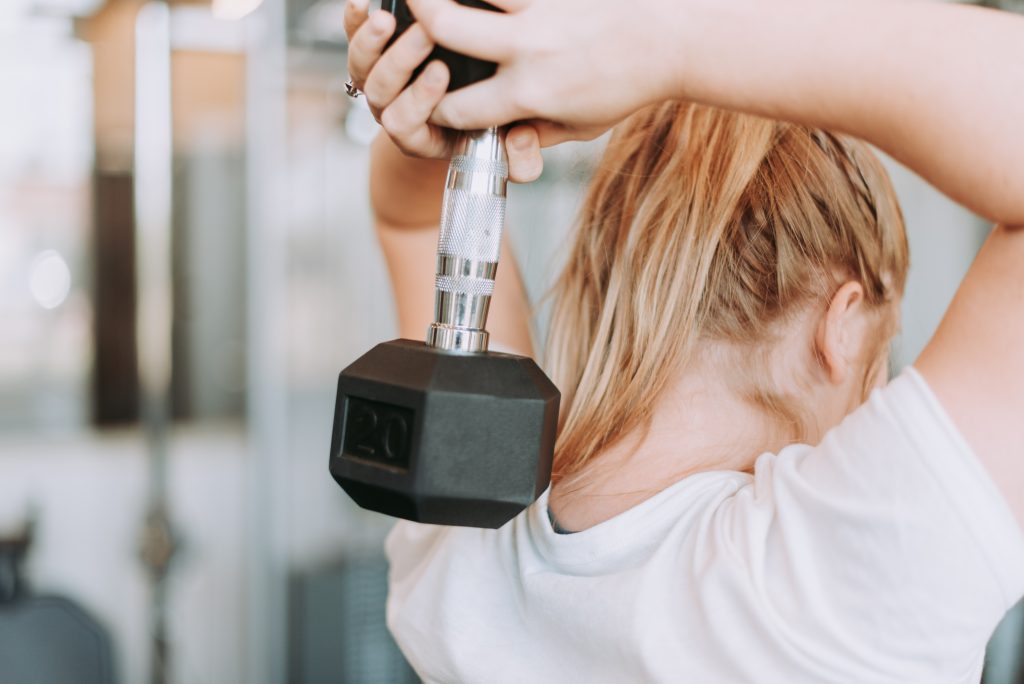With the summer months right around the corner, many of us are beginning to find ourselves motivated to become more active, reintroduce exercise back in our routines and prioritise moving our bodies. But, what many of us don’t know is that exercise can also have an impact on our iron status. Samantha Child our Fresh Start Nutritionist shares 4 ways exercise can affect the way your body uses iron, and why you may need a little extra!

But first, why is iron so important?
Iron is found in every cell of your body and is needed for a number of various roles that all support your general health and wellbeing (1). Think energy production, immune support and brain health (2). There are many things that can impact our iron levels and how much we need, from dietary preferences to our age and gender. Those who are at risk of not getting enough iron include people following a vegetarian or vegan diet, teenage girls, pregnant women and athletes or very active individuals.
1. More exercise? More iron!
Whether you’ve signed up for your first 10km run, trying out new HIIT classes or are a seasoned trail runner – it’s important to know that moderate to strenuous exercise can have an impact on your daily iron requirements (3).
Regular intensive exercise (like >30 min of a HIIT work out or >60 minute endurance run) requires more iron to help the body create more energy. Evidence shows us that both recreational trainers and elite athletes are at increased risk of developing iron deficiency anaemia (4) due to;
- Muscle growth can increase the demand for iron to produce new blood cells and tissue
- Iron is lost in sweat (cue heavy sweaters or those undertaking activity during summer months or in hot environments).
2. Female athletes are at higher risk
Exercise can increase our need for iron, and female athletes may require even more. Currently, 1 in 14 New Zealand women are low in iron (2) and 1 in 3 will experience iron deficiency anaemia at some point in their lifetime (4).
Many factors can contribute to low iron, but specifically for females of a reproductive age menstrual blood loss can play a big role (4).
If you’re a female athlete aged 19 – 50, it’s important know that your iron requirements (18 mg/day) are the highest!

3. Knowing the signs (early!) is the key
Iron deficiency can sometimes seem ‘invisible’ – it doesn’t seem like a problem, until it is! We know iron deficiency anaemia effects our general health, but it can also have a direct impact on our training and performance during exercise.
You may feel more tired or flat that normal during a session, and in some cases feel unable to exercise at all. Low levels of iron can reduce oxygen up take in our cells, reducing our performance capacity – particularly during aerobic or endurance exercise (3).
Knowing the signs that you may be low in iron is the key to ensuring you can get on top of it early. This can look like; (3)
- Fatigue, during both daily activities and training
- Feeling breathless, dizzy or weak
- Brain fog
- Getting sick more often, for longer.
4. Low iron or overtraining?
Fatigued, dizzy, out of breath – sounds familiar, right? If you’ve someone who has worked hard during a training session or maybe hasn’t had a much-needed rest day in a while, you’ll be familiar with these feelings!
The tricky part with many of the common symptoms of iron deficiency is that they can also be attributed to over training. This is why regular health screening (i.e. blood tests) and check ins with your GP or registered health professional is so important.
If you are found to be low in iron (deficient), your health professional will be able to help you identify the right dose and type of iron supplement for you.
Getting enough iron
There are plenty of ways to keep up your intake of iron – no matter your dietary preferences or choices. World Iron Awareness Week (14th – 20th October) is a great time to reflect on whether your current food choices are supporting your exercise levels and personal needs.
Iron rich foods include red meat, chicken and fish, but also include many plant foods such as legumes, tofu, dark leafy greens, nuts, seeds and dried fruits. Many people also don’t realise that some food products like breakfast cereals have iron added to them too! Including a variety of iron rich foods in your diet is a great place to start, but it is important to remember that everyone absorbs and utilises iron differently.
If you are concerned about your iron status or ability to get enough through your diet, consult your GP, or a NZ registered dietitian / nutritionist for individualised advice.
References
- Healthify (2022) Low Iron (Iron Deficiency). Accessed online via Iron deficiency | Healthify
- World Iron Awareness Week (2024 The Iron facts. Accessed online via IRON FACTS — WORLD IRON AWARENESS WEEK (ironweek.co.nz)
- Sports Dietitians Australia (2024) Accessed online via Iron Depletion – Sports Dietitians Australia (SDA)
- Medicine (2021). The need to screen for anemia in exercising women. Accessed online via The need to screen for anemia in exercising women – PMC (nih.gov)


